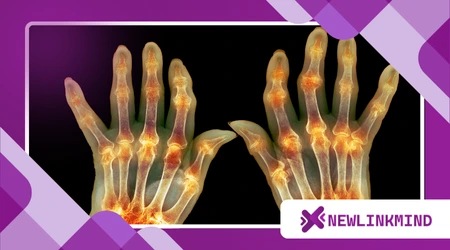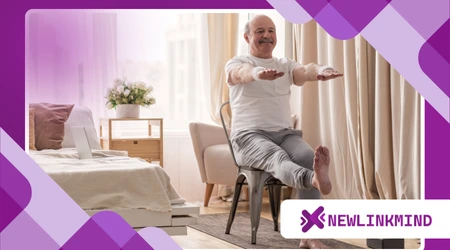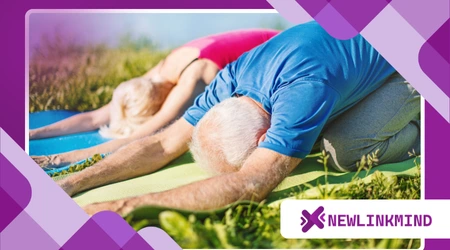Yoga for Seniors with Arthritis: Safe and Soothing Poses

Yoga for seniors with arthritis offers a beacon of hope, providing a unique blend of physical movement and mental tranquility that can significantly alleviate discomfort and improve quality of life.
Anúncios
This ancient practice, when adapted thoughtfully, becomes a powerful ally against stiffness, pain, and limited mobility, fostering a renewed sense of freedom and vitality.
Understanding Arthritis and Its Impact
Arthritis isn’t a single disease but a broad term encompassing over 100 conditions that affect joints. It leads to inflammation, pain, and often a decrease in range of motion.
For many seniors, daily activities become monumental tasks, impacting independence and overall well-being.
The persistent pain can be debilitating, often leading to reduced physical activity, which paradoxically can worsen joint stiffness.
Anúncios
This chronic condition demands a holistic approach, moving beyond mere symptom management. Focusing on gentle movement and mindful practices can make a profound difference.
Ignoring the signs only perpetuates the cycle of pain and immobility.
Why Yoga? The Gentle Power of Movement
Yoga stands out as an exceptional exercise choice for individuals with arthritis. Unlike high-impact activities, yoga emphasizes slow, controlled movements and mindful breathing.
Anúncios
This approach minimizes stress on already vulnerable joints, preventing further damage. Instead, it gently encourages flexibility and strength.
The beauty of yoga lies in its adaptability. Poses can be modified to suit individual capabilities and limitations.
Read more: The Mental Health Benefits of Yoga for Seniors
Chairs, bolsters, and blocks become invaluable tools, offering support and stability. This ensures a safe and effective practice for everyone.
Think of your joints like rusty hinges on an old gate. If you don’t move them, they become stiffer and harder to open.
Yoga, in this analogy, is like applying a gentle lubricant, slowly and carefully working those hinges until they move more freely, without forcing them open.
Regular practice helps lubricate joints, improve circulation, and strengthen surrounding muscles. Stronger muscles provide better support for joints, reducing the burden on cartilage and bone.
This creates a protective scaffolding around your joints.
Essential Principles for Safe Practice
Safety is paramount when practicing yoga for seniors with arthritis. Always listen to your body and never push into pain. Discomfort is a signal to ease off, not push through.
Modifying poses is a sign of wisdom, not weakness.
Start with shorter sessions and gradually increase duration as your body adapts. Consistency is more important than intensity. Even 10-15 minutes daily can yield remarkable benefits.
Establishing a routine helps your body anticipate the movement.
Hydration is also crucial for joint health. Ensure you drink plenty of water throughout the day. Warm-up exercises are non-negotiable before any yoga session.
They prepare your muscles and joints for movement, minimizing injury risk.
Consider seeking guidance from a certified yoga instructor experienced in working with seniors and arthritis.
Their expertise can provide personalized modifications and ensure proper alignment. A good instructor can spot subtle misalignments that might escape an untrained eye.

Soothing Poses for Arthritic Joints
Here are several gentle and effective yoga poses, specifically chosen for their benefits to arthritic joints. Remember to move slowly and breathe deeply throughout each pose.
1. Chair Mountain Pose (Tadasana with Chair Support)
Sit tall on a chair with your feet flat on the floor, hip-width apart. Ground your sit bones into the chair. Lengthen your spine, imagining a string pulling gently from the crown of your head.
Relax your shoulders down and back. This pose establishes proper posture and grounding.
++ What Happens When Seniors Practice Yoga Daily?
Bring your palms together at your heart center or rest them gently on your thighs. Feel the stability of the chair supporting you.
Hold for several breaths, focusing on your upright posture. This simple pose can reduce strain on your lower back.
2. Seated Cat-Cow Flow (Marjaryasana-Bitilasana)
Remaining seated, place your hands on your knees. As you inhale, arch your back slightly, gently lift your chest, and look up (Cow pose).
Feel a gentle stretch in your spine. This movement expands the chest.
As you exhale, round your spine, tuck your chin to your chest, and draw your navel towards your spine (Cat pose).
Feel the gentle release in your upper back. This sequence mobilizes the spine, crucial for overall joint health.
Repeat this flow slowly for 5-8 repetitions, coordinating movement with your breath.
It’s a wonderful way to warm up the spine and improve flexibility. Think of it as a gentle massage for your vertebrae.
3. Seated Spinal Twist (Parivrtta Sukhasana variation)
While seated, twist gently to your right, placing your right hand on the back of the chair and your left hand on your right knee.
Keep your spine long as you twist from your core. Avoid forcing the twist.
Gaze gently over your right shoulder. Hold for a few breaths, feeling a gentle stretch in your spine. Release and repeat on the left side.
This pose helps maintain spinal mobility and can relieve back stiffness.
4. Ankle Rotations (Padavrttasana variation)
Sit comfortably with your feet flat on the floor. Lift one foot slightly off the ground, keeping your knee bent.
Gently rotate your ankle in slow, controlled circles, first clockwise, then counter-clockwise.
Perform 5-10 rotations in each direction before switching to the other foot. This simple movement improves circulation to the ankles and feet, reducing stiffness. It’s like oiling a small, intricate gear.
5. Wrist and Finger Stretches (Manibandha Shakti Vikasaka)
Extend your arms straight out in front of you at shoulder height, palms facing down. Make gentle fists and rotate your wrists in circles, both clockwise and counter-clockwise.
Then, spread your fingers wide and make a fist, repeating several times.
These exercises are crucial for maintaining dexterity in the hands and wrists, often affected by arthritis. Think of them as miniature dances for your hands.

6. Supported Bridge Pose (Setu Bandhasana with Block or Cushion)
Lie on your back with your knees bent and feet flat on the floor, hip-width apart.
Place a yoga block or firm cushion under your sacrum (the flat bone at the base of your spine). Gently lift your hips to rest on the support.
Check this out: Easy Yoga Poses to Relieve Back Pain at Home
Allow your body to relax over the support, feeling a gentle opening in your chest and front of your hips. This supported pose is restorative and helps strengthen the glutes and hamstrings without straining the back. Hold for 1-2 minutes.
7. Legs-Up-the-Wall (Viparita Karani)
Sit with one hip close to a wall. Gently swing your legs up the wall as you lie back, so your legs are resting vertically against the wall and your torso is perpendicular to the wall.
Adjust your distance from the wall for comfort.
Place a cushion under your head if desired. Relax your arms by your sides, palms facing up.
This pose gently stretches the hamstrings, reduces swelling in the feet and ankles, and promotes relaxation. Stay for 5-10 minutes.
This is one of the most restorative poses, offering a gentle inversion without any strain. It’s like hitting the reset button for your entire circulatory system.
The Broader Benefits of Yoga for Arthritis
Beyond physical movement, yoga for seniors with arthritis offers profound mental and emotional benefits.
The focus on breath (pranayama) and mindfulness helps manage chronic pain by shifting attention away from discomfort.
Regular practice can reduce stress, a known trigger for arthritis flare-ups.
Improved sleep quality is another significant advantage. When pain is managed and stress is reduced, a more restful night’s sleep often follows.
This contributes to better overall health and a more positive outlook.
One study published in the Journal of Rheumatology in 2018 found that participants with rheumatoid arthritis who engaged in a 10-week yoga program reported significant improvements in pain, fatigue, and mood. This highlights the comprehensive benefits of yoga.
Consider the cumulative effect of these small, consistent efforts. Each gentle stretch, each focused breath, adds up to a substantial improvement in well-being.
It’s not about achieving complex poses, but about finding ease in movement.
Incorporating Yoga into Your Daily Life
Making yoga for seniors with arthritis a regular part of your routine doesn’t require hours of dedicated time.
Short, consistent sessions are far more effective than sporadic long ones. Find a time that works best for you, whether it’s first thing in the morning or before bed.
Create a comfortable and quiet space for your practice. Dim lighting and soft music can enhance the experience.
Make it an enjoyable ritual, something you look forward to. Think of it as your personal sanctuary.
Here’s a sample weekly schedule focusing on variety and consistency:
| Day | Focus | Duration |
| Monday | Gentle Chair Yoga & Spinal Mobility | 20 minutes |
| Tuesday | Restorative Poses & Joint Release | 25 minutes |
| Wednesday | Light Walking & Breathing Exercises | 30 minutes |
| Thursday | Chair Yoga & Balance Drills | 20 minutes |
| Friday | Legs-Up-the-Wall & Deep Relaxation | 25 minutes |
| Saturday | Active Recovery (Gentle Stretching) | 15 minutes |
| Sunday | Mindful Meditation & Gentle Movement | 15 minutes |
Remember, consistency is key. Even on days when you feel less energetic, a few minutes of gentle movement can make a difference.
What if taking this small step could unlock a new level of comfort and vitality in your life?
Conclusion: Embrace Movement, Embrace Life
Living with arthritis can be challenging, but it doesn’t mean surrendering to pain and immobility.
Yoga for seniors with arthritis offers a compassionate and effective path to managing symptoms, improving physical function, and enhancing overall well-being.
By embracing safe and soothing poses, prioritizing gentle movement, and listening to your body, you can unlock a renewed sense of freedom and vitality.
It’s about nurturing your body, one mindful breath and gentle stretch at a time. The journey to greater comfort and mobility is within reach.
Frequently Asked Questions
Do I need any special equipment to start?
To start, you might only need a sturdy chair and comfortable clothing.
As you progress, a yoga mat, yoga blocks, and a blanket or cushion can be helpful for additional support and comfort. Many of these items can be substituted with common household objects, like rolled towels or firm books.
Can I practice yoga if I have severe arthritis?
Yes, yoga can be adapted for almost all levels of arthritis, even the most severe. The key is to make modifications to poses and use props like chairs, blocks, and cushions.
It’s crucial to work with a certified yoga instructor who has experience with seniors and arthritis to ensure the modifications are safe and effective for your specific needs.
How long should I practice yoga per day to see results?
Consistency is more important than duration. Even 10 to 15 minutes of daily practice can bring significant benefits over time.
If you can dedicate 20 to 30 minutes a few times a week, that would be excellent. The important thing is to create a regular habit that you can comfortably maintain.
What are the signs that I should stop or modify a pose?
No, yoga is a valuable complement to arthritis treatment, but it should not replace medical advice or prescribed medications.
It’s a powerful tool for managing symptoms, improving physical function, and reducing stress, but always talk to your doctor about incorporating yoga into your treatment plan.
Do I need any special equipment to start?
You should always stop or modify a pose if you feel sharp or shooting pain, joint swelling, or if the pose aggravates your arthritis symptoms.
Mild discomfort during a stretch is acceptable, but it should never be a pain that makes you “hold your breath.” Listen to your body and respect your limits.
++ Yoga for Arthritis: Benefits, Poses, and Tips to Get Started
